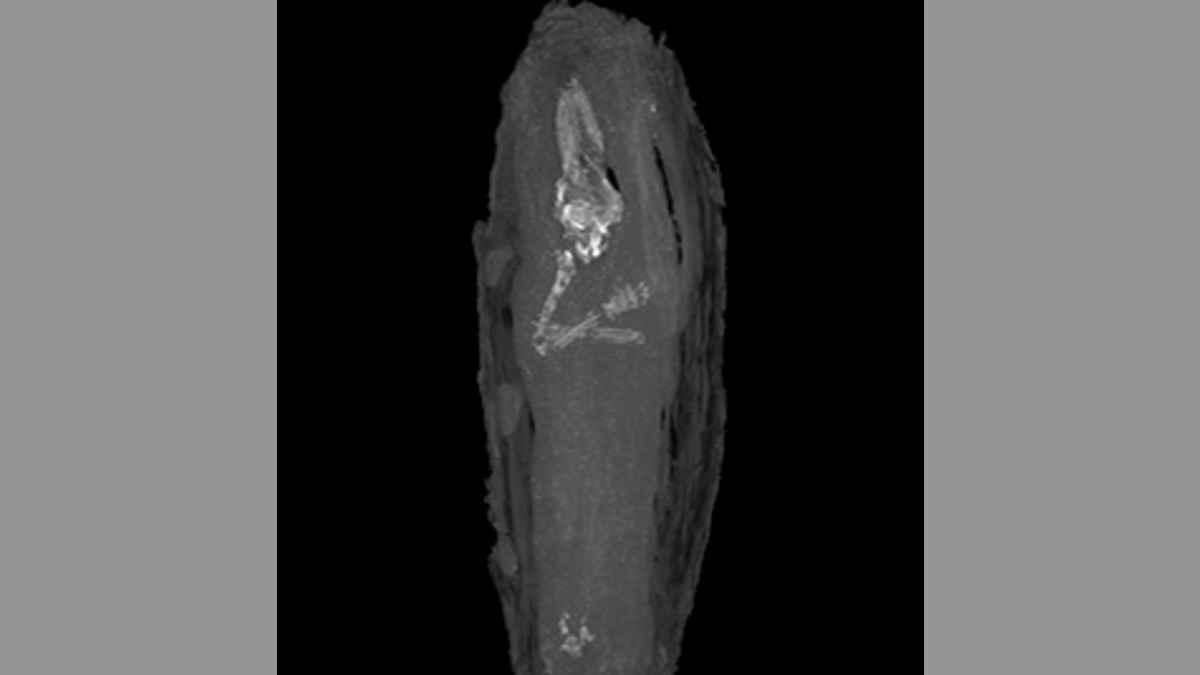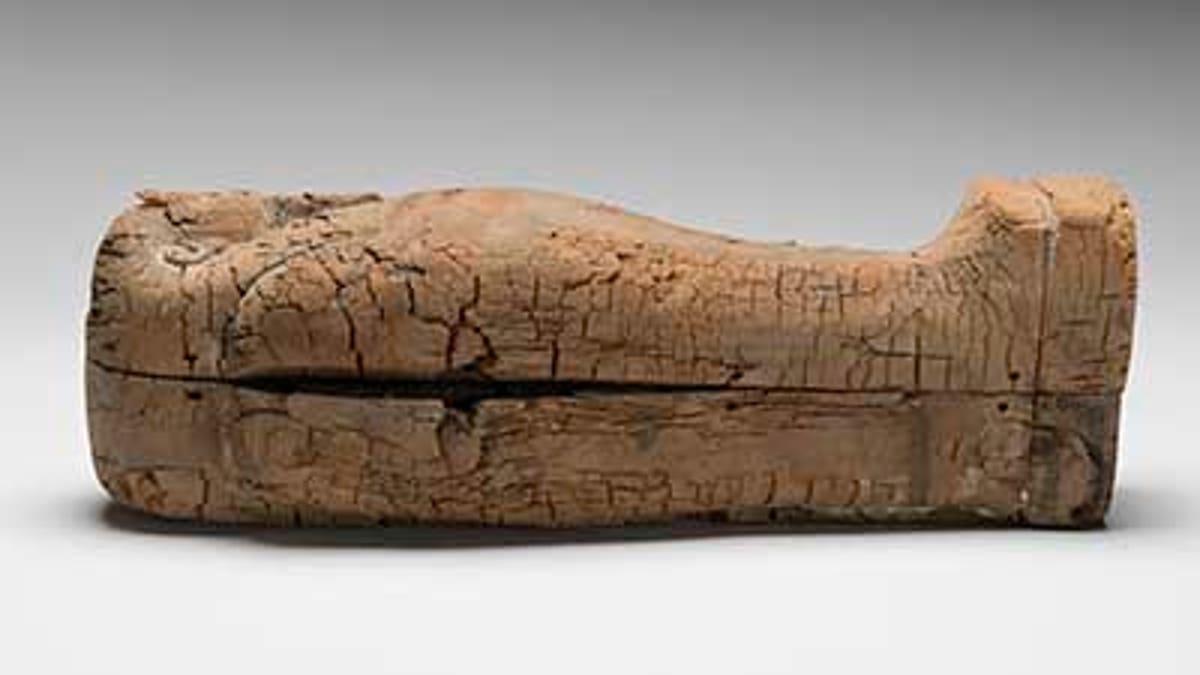
Micro CT scan image of the upper limbs and skull of fetus. (The Fitzwilliam Museum, Cambridge)
A computerized tomography scan of a small decorated Egyptian coffin has revealed the remains of a fetus that was just 16 to 18 weeks along, the Fitzwilliam Museum in Cambridge, England, has announced. The museum said that this makes it the youngest buried and embalmed Egyptian fetus that has been academically verified.
The fetus was probably miscarried, the museum said, and it’s unclear whether it was male or female.
Related: Egyptian mummy's symbolic tattoos are 1st of their kind
The cedar coffin, which is just about a foot and a half long, was first found in 1907 in Giza, Egypt, and is thought to date to between 664 and 525 B.C. But the museum only discovered what was in the coffin when working on an exhibition called Death on the Nile: Uncovering the afterlife of ancient Egypt, which runs until May 22.

The coffin containing the mummified fetus. (The Fitzwilliam Museum)
Since the contents of the coffin were wrapped in bandages and resin, and an x-ray was “inconclusive,” the museum decided to have the piece CT scanned at Cambridge University.
Related: Nefertiti still missing: King Tut's tomb shows no hidden chambers
The museum reports that the leg and arm bones, and digits on the hands and feet, were noticeable in the scan. The fetal arms were crossed over the chest.
“Using noninvasive modern technology to investigate this extraordinary archaeological find has provided us with striking evidence of how an unborn child might be viewed in ancient Egyptian society,” Julie Dawson, the head of conservation at the Fitzwilliam Museum, said in a statement. “The care taken in the preparation of this burial clearly demonstrates the value placed on life even in the first weeks of its inception.”
